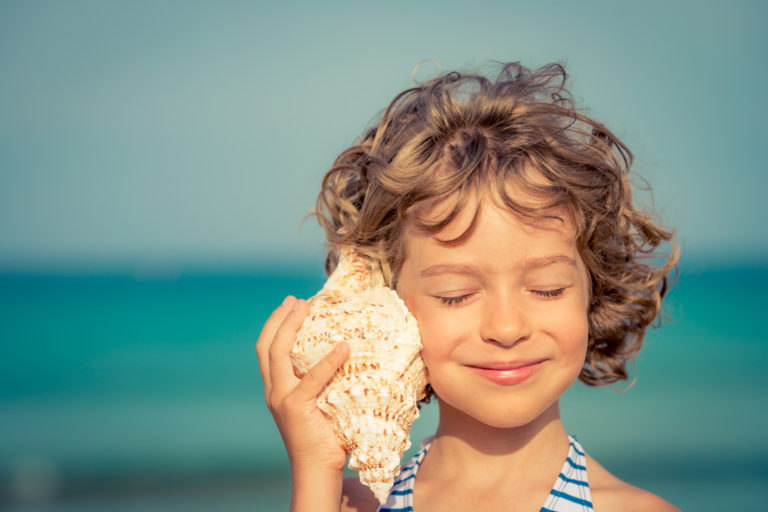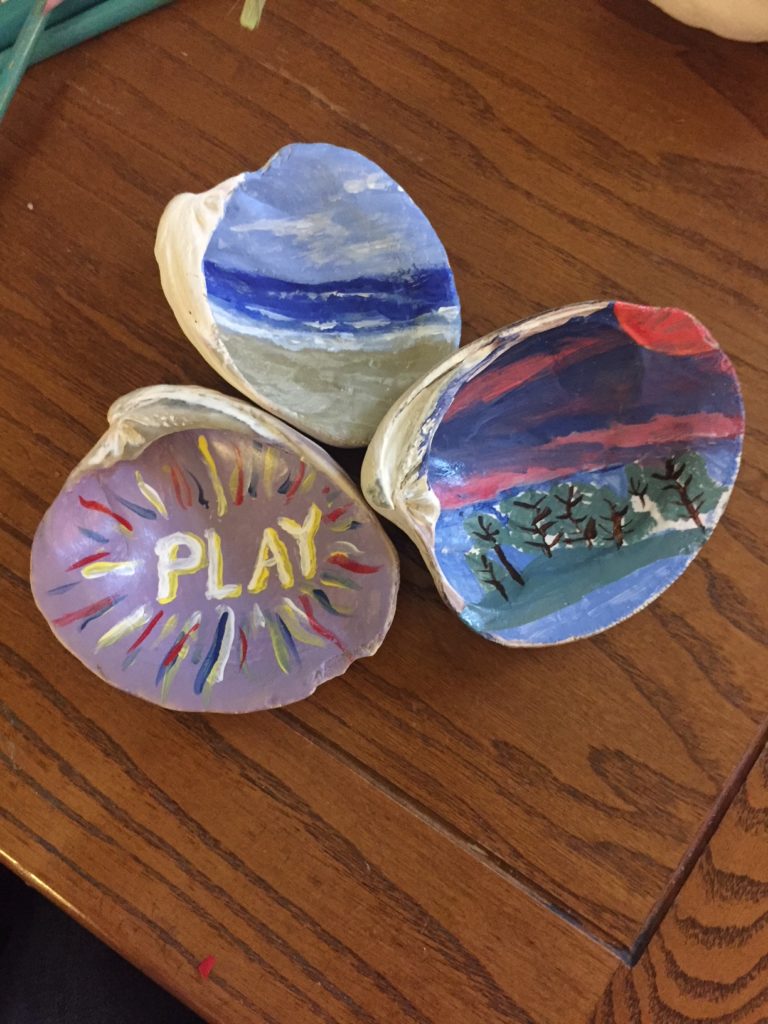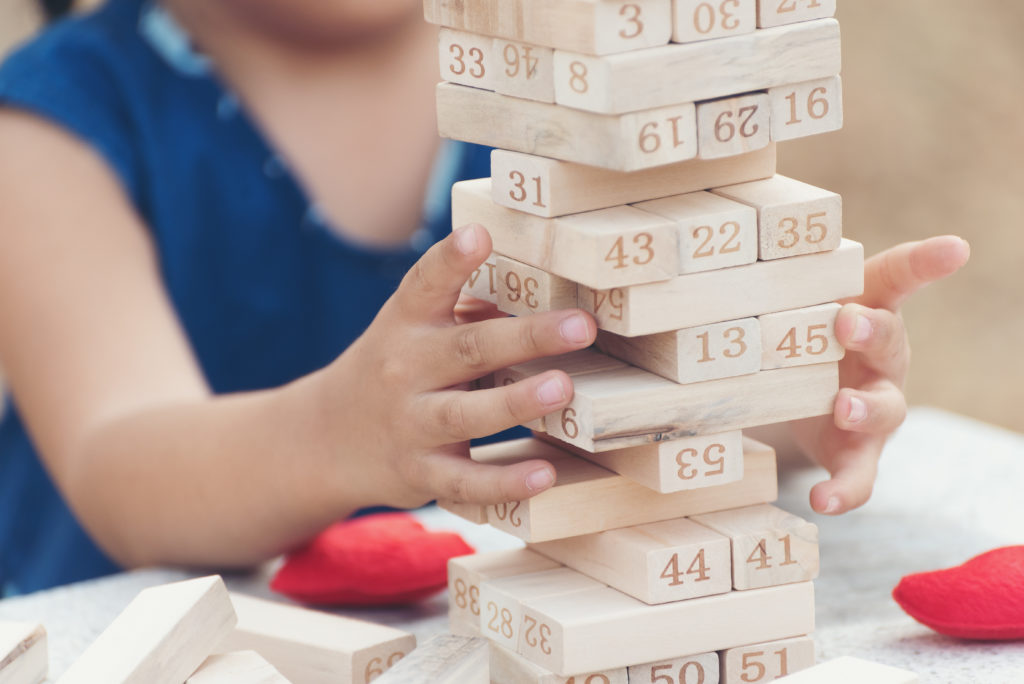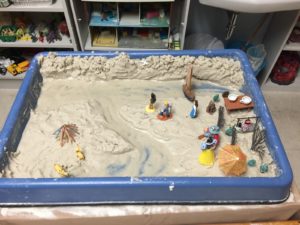
This activity can be used to discuss protective factors, resiliency, and self-esteem (finding beauty in the imperfections). By using a shell as a symbol of the body, nature can be used as a healing agent in therapy.
Materials
- (For religious teens and to use this activity for grief, pair with book: My Beautiful Broken Shell: Words of Hope to Refresh the Soul by Carol Hamblet Adams)
- Seashells (at least 3.5″, white, flat surfaces are best. Have multiple so client can choose)
- Primary paint colors (acrylic or water-color)
- Small paintbrushes
- Water (for cleaning brushes)
- Paint palette or paper plate
- Begin by asking, “How are our bodies like shells?”
Begin the dialogue with clients of how shells protect animals in nature the way our bodies protect ourselves.
Examples:
“Shells are symbols of protection.”
“Shells all used to have animals living in them.”
“Some shells still have animals in them and they are in the sea.”
“Other shells have washed up on the beach, like your shell,” (point to shell in front of child). “Just like us, shells are all different and they’ve all been through different things.”
“Even though some shells may have cracks or be worn down from the ocean, they are still strong and beautiful with stories to tell.”
2. Next, have the client think of a happy memory, safe place, or relaxing scene.
This step is about how a child/teen can use the shell as a reminder of protection and embracing imperfections.
The shells can also be used as grounding items when a client is upset or needs comforting. You may choose to facilitate this step by first discussing and practicing mindfulness.
Instruct the client that they are free to paint any images or symbols that bring them peace and feelings of protection.
3. Discuss while painting.
While the client is painting, you can engage in a dialogue about what protection means to them and how they feel protected. Or for other clients, how even the imperfect shells can still be beautiful and have stories to tell.
Examples:
“Since this shell represents safety and protection, you might consider keeping it in your safe space. Where are you planning on keeping your shell?”
“Who keeps you safe?” (Or for teens, “How do you keep yourself safe?”)
“Which safe place are you choosing to paint?” etc.
Some kids may want to show their shell to their caregiver and explain what the shell means to him or her.

Example of using inspirational words and safe places on shells.
4. Conclusion
Have the Client think of a special place in his/her home to keep the shell as a daily reminder of protective factors, motivating words, and safe places.
Want more therapeutic activities?







I love the idea of equating shells to our protective selves.
Great suggestions for incorporating seashells into play therapy!
In a grief group that I facilitate for children who have lost a loved one, we use shells for when they close, or complete their time in the program. We equate shells to our lives. It has a rough side which represents the rough times in our lives and the smooth side to give hope that better days are ahead.
What a great way to incorporate textures into using seashells!
I love incorporating nature objects in play therapy like sea shells. Appreciate another creative way to use!